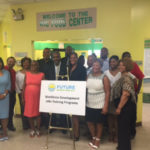CONCORD, N.H. (AP) _ A New Hampshire Center for Public Policy study predicts the state’s aging population will reshape its health care system.
The center’s annual report, titled “What Is New Hampshire,” says that by the year 2020, nearly 20 percent of the state’s population will be 65 or older, a dramatic jump from 13.5 percent in 2010.
The report also notes that the economy is changing significantly. The last four years mark the first time in 40 years that New Hampshire’s job growth rate _ less than one percent _ lags behind regional and national rates. And the state between 2000 and 2010 experienced the slowest rate of GDP in 40 years, increasing just 11.8 percent versus a high of 75 percent from 1980 to 1990. The GDP growth rate between 1990 and 2000 was 51 percent.
And while New Hampshire retains its status as one of the top states in the country for the quality of education, it’s also showing widening gaps in performance based on socio-economic status and disparities between school districts, according to the report.
The state’s high schools graduate between 77 and 95 percent of their students, but some schools graduate as few as one-third, the study found.
New Hampshire ranks in the bottom third nationwide for contribution to education, with state money averaging 36 percent of a local school district’s revenues. Most school revenues are raised from local property taxes, with revenues varying greatly from district to district.
New Hampshire, the study states, ranks 50th in support for higher education, while average student loan debt of $32,000 ranks highest in the nation.
The state’s revenue stream makes it unique, according to the report. Whereas most states raise revenues from sales taxes, income taxes or a combination of both, New Hampshire relies on a patchwork of smaller taxes and other revenue sources.
The biggest contributors to state coffers are the business profits tax at 19 percent, meals and rooms tax at 17 percent and profits from liquor sales at 9.3 percent.
The report concludes that under the current scheme, revenues will not keep pace with state spending.











